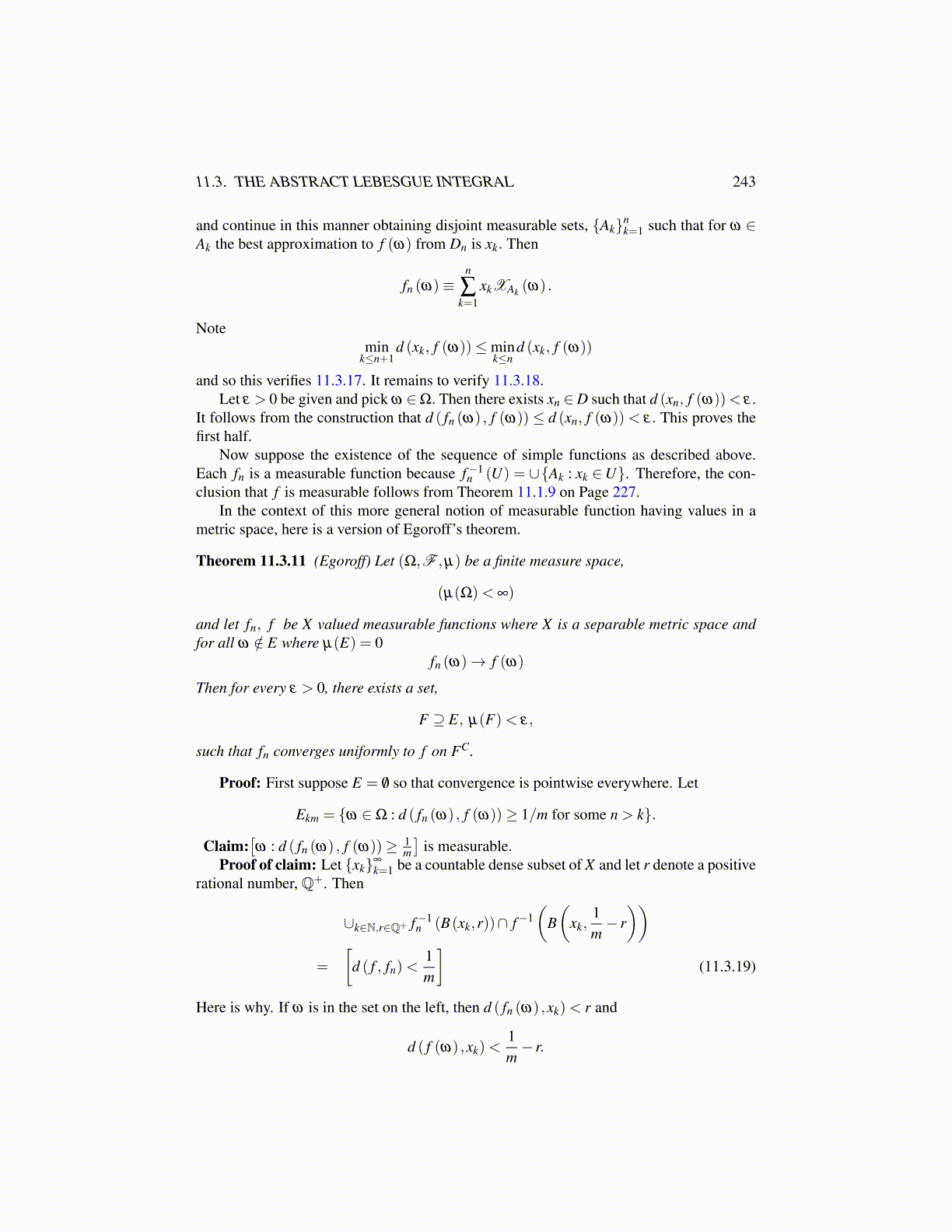
11.3. THE ABSTRACT LEBESGUE INTEGRAL 243
and continue in this manner obtaining disjoint measurable sets, {Ak}nk=1 such that for ω ∈
Ak the best approximation to f (ω) from Dn is xk. Then
fn (ω)≡n
∑k=1
xkXAk (ω) .
Notemin
k≤n+1d (xk, f (ω))≤min
k≤nd (xk, f (ω))
and so this verifies 11.3.17. It remains to verify 11.3.18.Let ε > 0 be given and pick ω ∈Ω. Then there exists xn ∈D such that d (xn, f (ω))< ε .
It follows from the construction that d ( fn (ω) , f (ω))≤ d (xn, f (ω))< ε. This proves thefirst half.
Now suppose the existence of the sequence of simple functions as described above.Each fn is a measurable function because f−1
n (U) = ∪{Ak : xk ∈U}. Therefore, the con-clusion that f is measurable follows from Theorem 11.1.9 on Page 227.
In the context of this more general notion of measurable function having values in ametric space, here is a version of Egoroff’s theorem.
Theorem 11.3.11 (Egoroff) Let (Ω,F ,µ) be a finite measure space,
(µ(Ω)< ∞)
and let fn, f be X valued measurable functions where X is a separable metric space andfor all ω /∈ E where µ(E) = 0
fn (ω)→ f (ω)
Then for every ε > 0, there exists a set,
F ⊇ E, µ(F)< ε,
such that fn converges uniformly to f on FC.
Proof: First suppose E = /0 so that convergence is pointwise everywhere. Let
Ekm = {ω ∈Ω : d ( fn (ω) , f (ω))≥ 1/m for some n > k}.
Claim:[ω : d ( fn (ω) , f (ω))≥ 1
m
]is measurable.
Proof of claim: Let {xk}∞
k=1 be a countable dense subset of X and let r denote a positiverational number, Q+. Then
∪k∈N,r∈Q+ f−1n (B(xk,r))∩ f−1
(B(
xk,1m− r))
=
[d ( f , fn)<
1m
](11.3.19)
Here is why. If ω is in the set on the left, then d ( fn (ω) ,xk)< r and
d ( f (ω) ,xk)<1m− r.